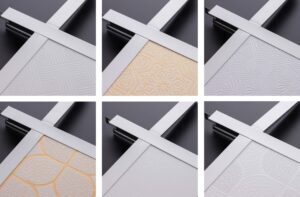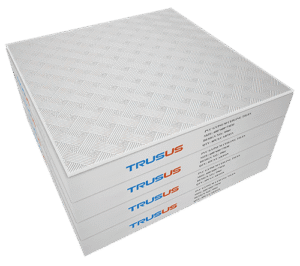Many homeowners believe gypsum is always asbestos-free. That can be dangerous. Old building products sometimes used asbestos in gypsum boards for fire resistance, strength, or insulation.
Pure natural gypsum does not contain asbestos. However, some gypsum-based boards made before the 1990s may contain asbestos fibers, especially fire-resistant, moisture-proof, or industrial-grade boards.

If a ceiling was built before the 1990s or if the gypsum product has enhanced fireproofing or soundproofing, it is safer to test a sample. I have seen cases where an 80s fire-rated gypsum ceiling contained chrysotile asbestos. The risk comes from dust during demolition, not from normal use.
How do I know if my ceiling contains asbestos?
Some people think they can spot asbestos with the naked eye. That is impossible. Asbestos fibers are mixed into the product and invisible.
You cannot tell by looking. The only reliable way is to send a material sample to a certified lab for asbestos testing.

From my experience, there are three key signs to consider:
- The installation date of the ceiling.
- The type of gypsum board used.
- The function of the board (fireproof, soundproof, moisture-proof).
Here is a table that breaks it down:
| Factor | Low risk of asbestos | Possible asbestos risk |
|---|---|---|
| Year installed | After 1995 | Before 1990 |
| Type of board | Standard paper-faced gypsum board | Fire-rated, moisture-resistant, specialty gypsum |
| Country of origin | Known asbestos ban before 1990s | Pre-ban imports from countries with late asbestos bans |
In one renovation project, the owner wanted to demolish directly without testing. The building was built in the 1980s. I insisted on testing first. We discovered asbestos, which changed the demolition plan and kept workers safe.
Do drywall ceilings have asbestos?
Many people hear the term "drywall" and assume it is asbestos-free. That is mostly true for modern products, but history tells another story.
Modern drywall ceilings almost never contain asbestos. However, some drywall joint compounds and boards made before the 1980s may contain it.

Drywall is typically made from gypsum, facing paper, and additives. In the mid-20th century, some drywall products—especially those marketed as fire-rated—were reinforced with asbestos fibers. Some joint compound, patching, or skim coats made before the ban may still contain asbestos, even if the board itself does not. In old projects, it is important to treat both the board and finishes with caution. I once encountered a ceiling where the gypsum board was asbestos-free, but the joint compound used between sheets contained hazardous fibers. That surprised the owner, who thought the risk was only in the boards themselves.
When did gypsum stop using asbestos?
People often ask if there is a clear cutoff date for asbestos in gypsum products. There is, but it varies by country.
In most countries, asbestos use in gypsum products stopped between the late 1980s and early 1990s, when national bans took effect.

Here is a timeline based on the regions I have worked with:
| Country/Region | Ban or Major Phase-Out Year | Notes |
|---|---|---|
| USA | Mid-1980s to early 1990s | EPA rules limited asbestos in building materials |
| Australia | 1989 | Complete ban by 2003 |
| European Union | Early 1990s | Varies by member state |
| China | Early to mid-1990s | Shift to asbestos-free gypsum formulas |
In my own construction work, I treat anything made before 1990 as suspect unless proven otherwise. It is better to over-prepare than to risk worker health. Testing is quick and cost-effective compared to the risks of airborne asbestos dust.
Conclusion
Gypsum itself is safe, but older specialty boards may contain asbestos. Check the age, type, and origin of the board, and test when in doubt.


